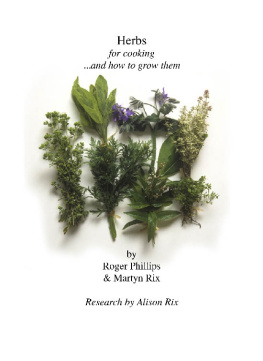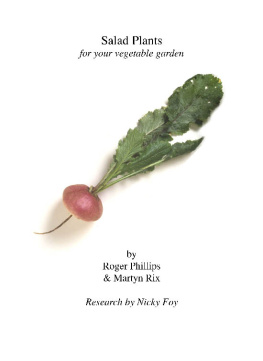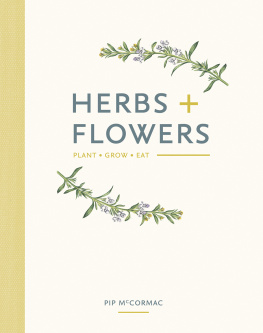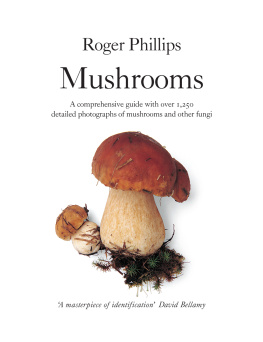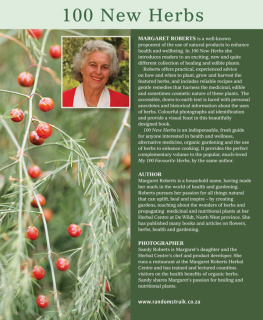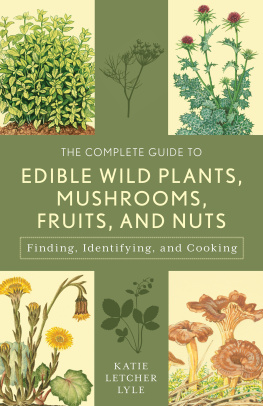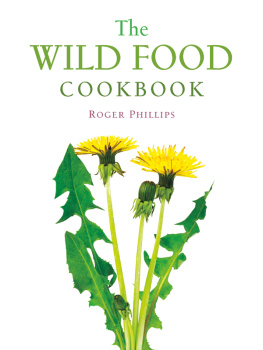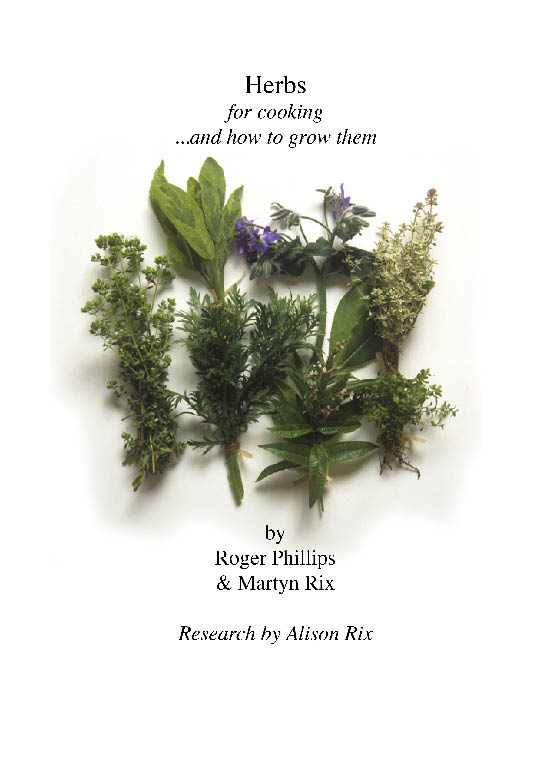Acknowledgements
We would like to thank the following gardens and herb suppliers for allowing us to visit them and photograph their plants:
The Royal Horticultural Societys Garden, Wisley, Surrey; Cambridge University Botanic Garden; Gravetye Manor; Arley Hall: Ventnor Botanic Garden, Isle of Wight; Portmeirion Gardens, North Wales; Barnsley House Garden; The Ballymaloe Cookery School Garden; Eden Croft Herb Garden; Hollingtons Herb Garden; Eccleston Square Gardens; Villandry.
Among others who have helped in one way or another we would like to thank: Rosemary Verey, Joy Larkcom, Marilyn Inglis, Anne & Tom Thatcher, Darina Allen, Jan & Derick Curry and Roger Poulett.
Introduction
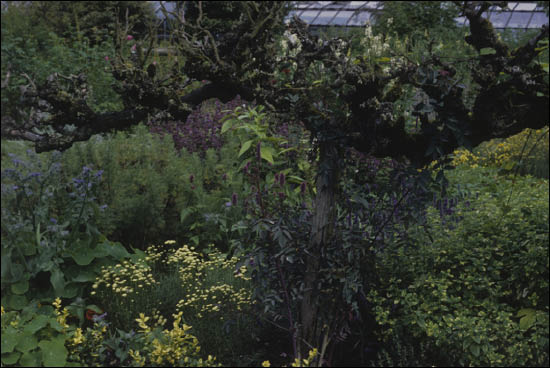
Herbs defined as plants whose leaves, flowers, stems, seeds and roots are used for culinary or medicinal purposes have been used by man to enhance his food from the very earliest times. There are many historical records of the gathering and cultivation of herbs for these purposes, and the culinary uses and cultivation of herbs continue to be of interest to those who enjoy gardening and good food. The old Herbals contain much of interest too, and some of them have been reprinted in facsimile, making them available to the general reader. In this book we focus on the herbs useful for cooking, their characteristics, growing requirements and their uses.
There are an enormous number of culinary herbs, so we have selected those that are easy to grow, and of real use in the kitchen; not only edible, but truly palatable. In one or two cases we have included herbs that do not strictly fulfil these criteria, but which are so well known that their absence would seem odd; the exception to this is Rue, which we have omitted as it can actually cause harm to some people.
Choosing Herbs
We have attempted to give a wide selection of good plants, so that the reader can make an informed choice based on preference and the requirements of the plant. To achieve success, you should accept that you are unlikely to be able to grow every type of herb; some prefer poor, rocky soil, while others need good deep, moist earth to flourish and not all gardeners can provide both types of habitat. If your life is busy and time at a premium, avoid those plants that need constant watering, pinching out and staking. Climate is also important, and lack of a long warm summer, for example, will sometimes affect a plants ability to produce seed, which might stop you from trying some of the spices described at the end of the book. The ability to provide greenhouse or other protection in the winter can make a difference too. Even if you have no garden, you will still be able to grow many herbs in pots on a balcony or windowsill, and we have recommended some that do well in containers.
Gardening should be fun and a herb garden can be very attractive when a variety of plants is grown. We have therefore included not only the indispensable herbs such as mint and parsley, but also a few of the more unusual varieties, such as Basil Purple Ruffles, to provide a challenge. A decorative variety for example, Icterina, which is a variegated sage can often be as useful as the better known type and prettier to look at.
Growing Herbs
Horticulture is an inexact science, and there are no general rules for growing herbs; planting details will be found under individual entries in the following pages. The plants have been chosen with gardeners throughout the United States and northern Europe in mind. However, differences in climate will mean that there will be slightly different requirements with regard to protection from extremes of temperature, time of sowing, harvesting and so on. Where applicable, the natural habitat of the species has been given in the belief that this will help the gardener to provide suitable growing conditions. The idea is simple; if the plant is native to a hot, rocky hillside in Turkey it will need a well-drained, sunny site in the garden. Conversely, a herb that prefers boggy patches of shady woodland is unlikely to thrive in the scorching heat of an open border. Once this simple principle is grasped you should have no trouble!
Herb Gardens
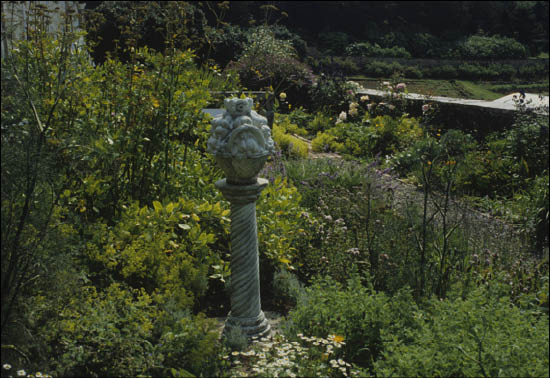
Much has already been written on the subject of herb gardens, their design and planting. The best way to get ideas is to look at as many gardens as you can, and decide which elements please your eye and suit your plot and pocket. There are no hard and fast rules, unless you wish to reconstruct an historically accurate design, but there are a few commonsense points to be made. The first is that herbs can be grown in any part of the garden and do not have to be corralled in the herb or kitchen garden; some striking plants, such as bronze fennel, look wonderful in herbaceous borders. Secondly, a herb garden tends to be most useful sited close to the house. Thirdly, bear in mind the logistics of harvesting herbs narrow borders often make this easier. A final point to remember is that some herbs are very invasive and when planning your garden, you should try to devise a way of containing such plants; a common solution is to divide a bed into sections using stones, bricks or boards.
Using Herbs in the Kitchen
Although the way you use herbs in cooking is mainly a matter of personal preference, certain herbs have become associated over the years with particular foods. Horseradish, for example, is often used in a piquant sauce for beef or for oily smoked fish such as mackerel, while sage and thyme constitute the traditional flavouring of stuffing for poultry, and fennel and dill enhance the flavour of fish such as salmon. The leaves of many herbs, such as coriander and parsley, are best used fresh, while others, such as Bay Laurus nobilis, develop a better flavour after drying. Unless otherwise stated, leaves may be dried on newspaper (in the sun, preferably) and stored (on the stalk if possible) in tall glass jars in a darkish place.
Another method of keeping herbs is to freeze them, which is sometimes preferable to drying as the leaves retain more of their colour and flavour. Herbs such as parsley benefit from this form of storage, which is also labour-saving because you can simply crunch the bag of frozen parsley in your hand and pour a handful, ready-chopped straight into your cooking.
Herbs in History
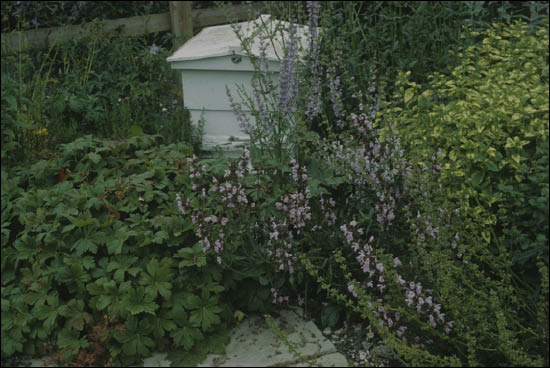
Although we use culinary herbs nowadays simply because we like the various flavours, it is worth remembering that in the past they were often used to disguise the unpleasant taste of preserved or slightly spoiled meat and fish; this explains why some strongly flavoured herbs gained a popularity that seems inexplicable to us. The earliest-known cookery book, written by the Roman Apicius, has been translated from Latin and republished and called the Roman Cookery Book (Harrap, 1958). From it we learn how much the Romans relied on herbs and spices to flavour their complicated recipes; a sauce for oysters and shellfish, for example, calls for lovage, parsley, dry mint, bay leaf and cumin. This heavy reliance on herbs and spices continued throughout the succeeding centuries, and there are numerous references to their use and cultivation.

